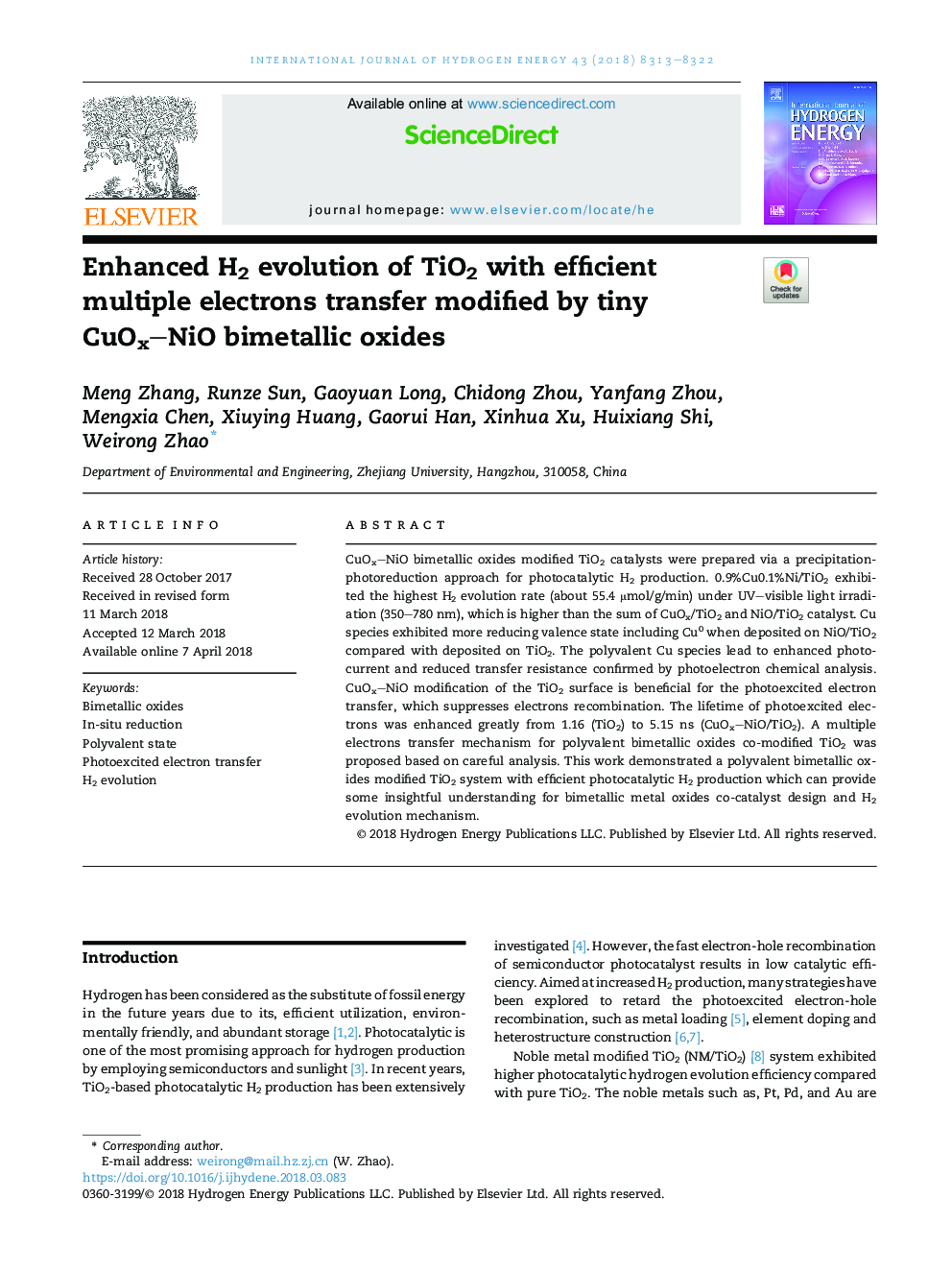| Article ID | Journal | Published Year | Pages | File Type |
|---|---|---|---|---|
| 7706253 | International Journal of Hydrogen Energy | 2018 | 10 Pages |
Abstract
CuOx-NiO bimetallic oxides modified TiO2 catalysts were prepared via a precipitation-photoreduction approach for photocatalytic H2 production. 0.9%Cu0.1%Ni/TiO2 exhibited the highest H2 evolution rate (about 55.4 μmol/g/min) under UV-visible light irradiation (350-780 nm), which is higher than the sum of CuOx/TiO2 and NiO/TiO2 catalyst. Cu species exhibited more reducing valence state including Cu0 when deposited on NiO/TiO2 compared with deposited on TiO2. The polyvalent Cu species lead to enhanced photocurrent and reduced transfer resistance confirmed by photoelectron chemical analysis. CuOx-NiO modification of the TiO2 surface is beneficial for the photoexcited electron transfer, which suppresses electrons recombination. The lifetime of photoexcited electrons was enhanced greatly from 1.16 (TiO2) to 5.15 ns (CuOx-NiO/TiO2). A multiple electrons transfer mechanism for polyvalent bimetallic oxides co-modified TiO2 was proposed based on careful analysis. This work demonstrated a polyvalent bimetallic oxides modified TiO2 system with efficient photocatalytic H2 production which can provide some insightful understanding for bimetallic metal oxides co-catalyst design and H2 evolution mechanism.
Related Topics
Physical Sciences and Engineering
Chemistry
Electrochemistry
Authors
Meng Zhang, Runze Sun, Gaoyuan Long, Chidong Zhou, Yanfang Zhou, Mengxia Chen, Xiuying Huang, Gaorui Han, Xinhua Xu, Huixiang Shi, Weirong Zhao,
